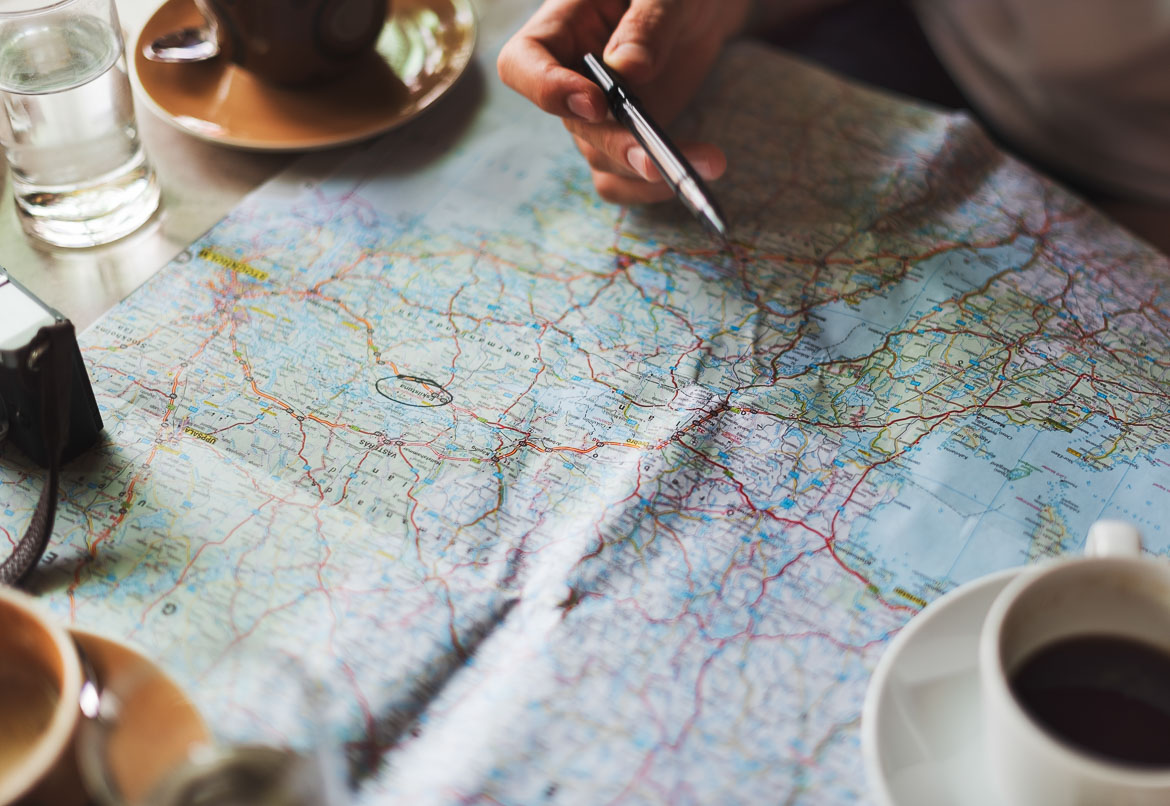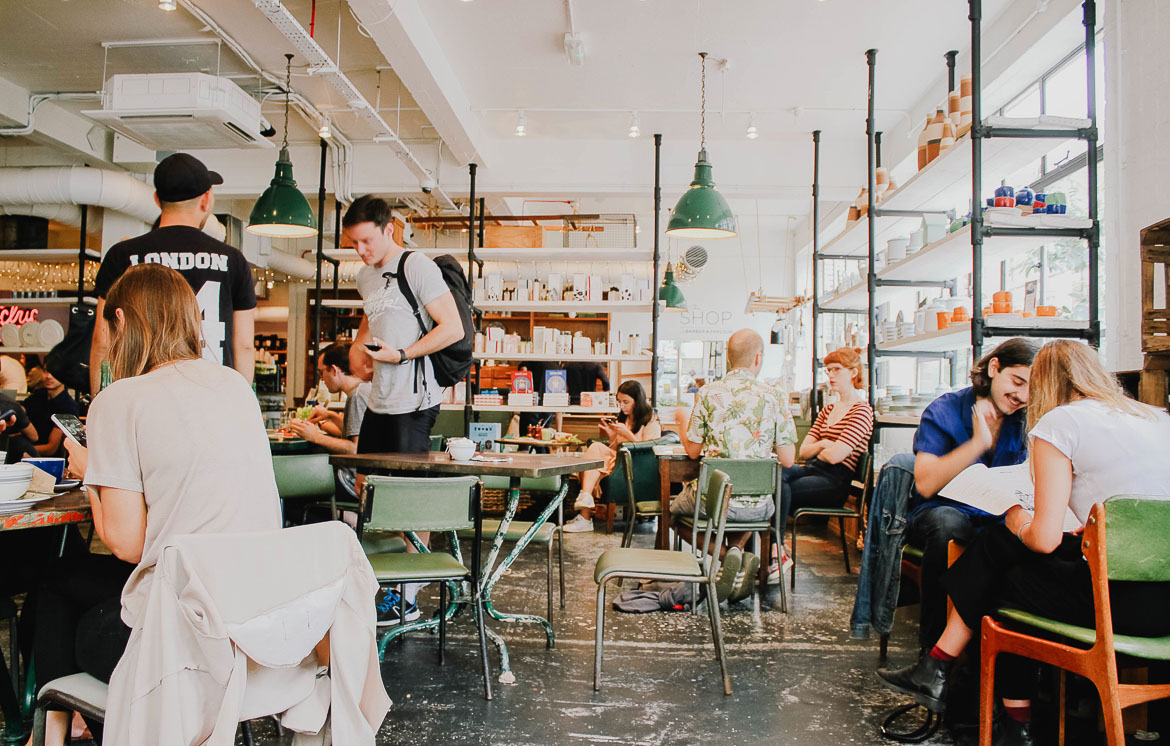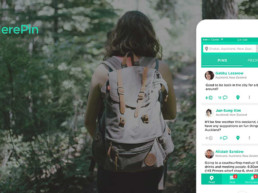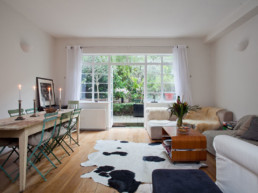Well this is certainly familiar, I snicker to myself as I step through the threshold into Jerónimos Monastery. I ignore the uncomfortable glances brought on by my obvious conversation with myself and do a little mental math – it’s almost nine years since I was in Lisbon last, summer of 2008. That visit was near the tail-end of a whirlwind two month, eight country trip through Europe where I diligently checked off every recommended sight and attraction as an overly eager, type A, first time backpacker often does. And not surprising in the least, a lot of that trip is kind of a blur.
So here I am back at the monastery without realizing I had been here before until I entered the enclosed cloisters. And I didn’t even realize from the outside, which is pretty inexcusable as the exterior is a Gothic marvel. While I was immediately concerned about the state of my memory, it made me reflect on my first visit to Lisbon and how it compares to this trip. And while the monastery, like most of Lisbon’s key sights, is still here looking exactly as it did before, my travel experience is notably different this time around. Inevitably some of the changes are borne out of my personal travel evolution, like changes in interests and increased disposable income, but a lot of the fundamental differences are a result of major industry disruption.
Well, let’s get to it then. Here is a personal reflection of how technology has disrupted travel throughout the last decade.

Directions
I’ve expressed in the past how unbelievably awful I am with directions, either relying on a travel companion to navigate fully or spending hours lost, often going in circles. I wish I was embellishing but I’m not.
My travels to Lisbon in 2008 would have involved a paper map provided by the hostel I was staying in with landmarks circled haphazardly, bus routes highlighted, and indecipherable descriptions written by underpaid front desk staff who provide so many city overviews a day that they could do it with their eyes closed. As I explored the city I would bust out the map, which likely had crumpled and begun to rip at the creases from overuse, and stand stationary looking from side to side trying to get my bearings while at the same time trying to be discreet about it so I wouldn’t be outed as a tourist. I would inevitably choose the wrong direction, only evident after a few blocks when I decide to consult my trusty map again. Ugh.
Fast forward to 2017 where I’m standing at the same corner, perhaps. Instead of consulting my paper map I’m fixated on Google Maps on my iPhone. I still face the same ‘which way to go’ predicament, but I realize I’m heading in the wrong direction much sooner with the help of my best friend, the little blue dot. Although it is much easier for me to navigate, it’s sheer pandemonium when the blue dot isn’t correctly identifying my location, when I’m without wifi and I’ve forgotten to sync it, or when I’m so glued to the screen that I unintentionally step into a bike lane.
Transportation
Back in the day, I would arrive in a new destination and seek out the transit options to get to where I was staying. This often involved meandering aimlessly trying to figure out how to connect to the metro, bus or tram and asking a friendly looking local for help, each step increasingly difficult with the weight of my backpack slowing me down. I would finally find it and board, then worry for most of the trip that I was going in the wrong direction or had the wrong ticket.
While cabs were certainly an option in most places, the perceived logistics and cost, not to mention the stress of trying to communicate properly so I didn’t end up in the opposite part of town put me off them for the most part during my Euro travels back in the day. In fact, there was one instance where I did take a taxi because I had no other choice and it was not a great experience: after arriving in Barcelona in the middle of the night after a delayed flight from Nice, I was charged 50E to go less than 4km to our airport hotel as the complimentary shuttle had just ended.
Nowadays there’s Uber in many cities, Lisbon included. While I won’t wade into the Uber versus taxi debate that is playing out nearly everywhere, in my experience it’s a godsend for travelers. Immediate access with your phone, no need to have the local currency on hand, less chance for misunderstanding as you type in the address, and the worry that you might be taken advantage of because you’re a tourist pretty much eliminated. The evening that I arrived in Lisbon this time around I had an Uber within a few minutes, which took me to where I was staying for 5€. It was also a lifesaver when I had to leave for the airport at 5:30am on a Sunday before public transportation opened to make my 7am flight.
Accommodation
When I was backpacking there was really only the option of hostel or guesthouse, the latter of which can be few and far between depending on where you are. Hotels at that time were out of budget, but even though they aren’t a financial deal breaker for me anymore, many are so cookie cutter that I’d prefer to stay elsewhere. In fact, I did stay at a three star hotel in Strasbourg during my 2008 trip and it was horrendous. It made me yearn for the clean and modern hostel dorm rooms I stayed in elsewhere.
Now there’s Airbnb, the home sharing model that’s winning travelers over. There’s nothing like living temporarily in a residential neighbourhood, where you can easily find yourself a local cafe, restaurant, and bar. This time around in Lisbon I stayed in a private room in a beautiful apartment in a historic building, hosted by an incredibly kind and energetic individual – all for $20 per night.

Restaurants
In the nine years between my two Lisbon trips a lot has changed in how we choose where to eat when traveling. Previously, I relied on guidebooks and research I did ahead of time, as well as local recommendations, which is arguably still the best way to find the best food. If none of the above panned out, I would walk around sizing up the restaurants and trying to decipher whether they were ‘good’ by scoping out the patrons and nonchalantly eyeing their plates. After doing this at multiple establishments and with loads of indecision, I would be so ravenous that I’d pretty much eat anywhere, choosing the next spot I came across. After a so-so meal, I’d inevitably walk a block and stumble upon the perfect restaurant, and proceed to figuritively kick myself.
These days the restaurant reviews on Yelp and Trip Advisor help to steer travelers in the right direction. While these reviews should be taken with a grain of salt like any rating system, it narrows the playing field considerably and also ensures you don’t end up at an underwhelming and overpriced tourist trap. Also, Yelp’s ‘nearby’ functionality is genius as it gives you the highest rated eateries in close proximity, perfect when you are on the verge of hangry. Some of the best meals I had in Lisbon were found through Yelp, while the worst, by far, was a random pick. Technology ftw.
Photography
Back in 2008 I brought along a small but capable point-and-shoot camera. I took a multitude of photos, waited until I was back home to upload them all, and then got totally overwhelmed by the sheer volume that I soon cast them out of my mind forever. Now when I travel I still bring along a camera, though I’ve upgraded to a DSLR since my backpacking days, which has built in wifi allowing me to transfer photos electronically so that I can curate or share them right away.
And while I wouldn’t rely solely on a smartphone for photos, my trusty iPhone captures some of my key travel moments. Not only do most smartphones take reasonably good photographs, certainly on par with my 10 megapixel camera back in the day, but as they’re at our sides all day long, they’re great for catching the in between and impromptu moments when we don’t have time to haul out the camera gear. Having my iPhone also makes it easy to use my photos immediately by posting on social media, so my family and friends can now not only live vicariously through me, but also have confirmation that I’m still alive.
Smartphone
The impact of the smartphone on travel has been alluded to above. In fact it’s really the underpinning technology of all of the evolutions I’ve described, allowing them to exist and take root. But I feel that it’s important to give it separate praise for all that it gives us. When I was in Lisbon in 2008 the iPhone was still in its first generation, and I didn’t yet feel the need to switch from my purely practical flip phone.
Now my smartphone is a lot more than just a phone, especially when I travel. It’s my music, my electronic ticket so I don’t have to hunt down a printer, my link to home (and work) via email, my guidebook, my white noise machine to drown out the sound of other travelers, my entertainment when I’m bored, and my source of information for just about everything.
I can recall waiting in the common area of my hostel in Lisbon for one of the computers to open up. This was an era pre tablets and before most backpackers carried a laptop with them. I could probably take fifteen minutes or so before the waiting mob would begin to encroach, where I would research the next destination, book upcoming hostels, connect with family and friends, print tickets, and Google the directions to the train station. This time ’round, and with the abundant wifi in Lisbon, I can look up anything immediately on my iPhone, connect with friends on the go, and follow the little blue dot to get where I need to go.
How Technology Has Disrupted Travel photos courtesy of stocksnap.io
Make your next trip the best one.
Departful is a full service travel agency creating truly exceptional travel experiences that are 100% personalized to you. Wherever you’re going, whatever your interests, we help you plan the perfect trip.
Lauren
Lauren Barth co-founded Departful in 2012 and is the Managing Director of Departful Media. Since then she has worked between North America and Europe and has published content in partnership with a variety of tourism boards and businesses based around the world. Lauren is currently based in Toronto, Canada.
More travel inspiration from Departful
2 Comments
Add comment Cancel reply
This site uses Akismet to reduce spam. Learn how your comment data is processed.





This is so spot on. Well said!
All true, adding a lot of comfort until you get run over by the car you oversaw, or worse, because you looked into your i-something when you should have returned the smile the potential love of your life gave you, passing by. I personally miss also the explorative, sometimes strenous character of travelling: arriving at a beach after a long bus ride (and a walk following directions in foreign language and plenty gestures), having your first coffee in the beach bar, leaving the luggage there, and screening the beach for which place looks nicest from the beach, has the best rooms left, the finest sand, haggling with empathy ….and getting what you deserve in the end. All gone and replaced by ‘certificates of excellence’.